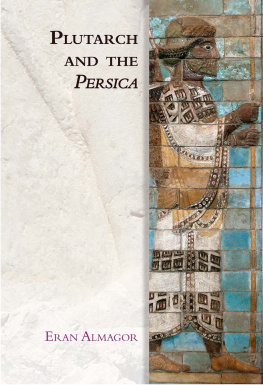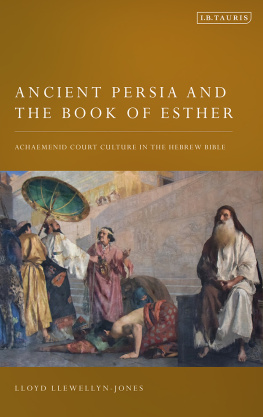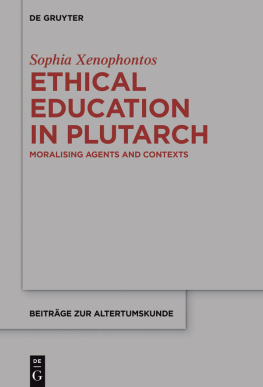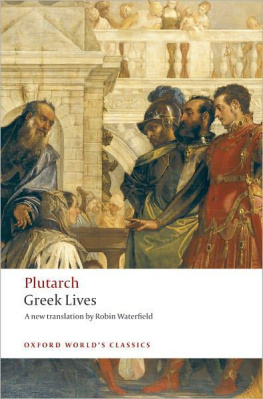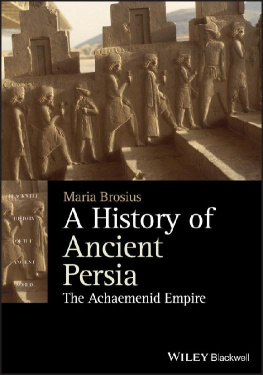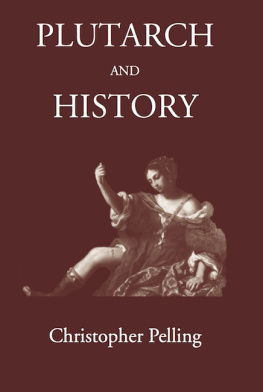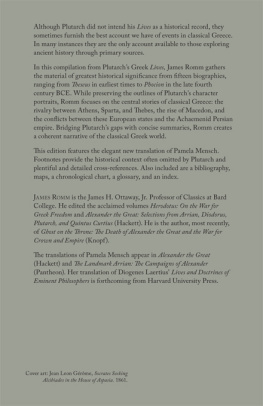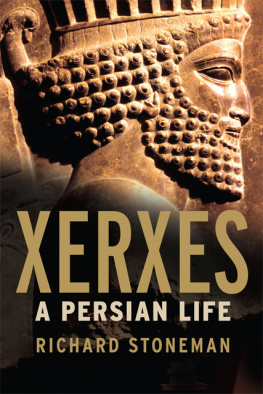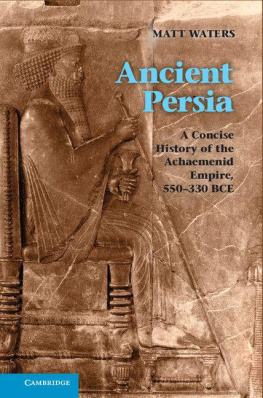
Plutarch and the Persica
EDINBURGH STUDIES IN ANCIENT PERSIA
Dealing with key aspects of the ancient Persian world from the Achaemenids to the Sasanians: its history, reception, art, archaeology, religion, literary tradition (including oral transmissions), and philology, this series provides an important synergy of the latest scholarly ideas about this formative ancient world civilization.
SERIES EDITOR
Lloyd Llewellyn-Jones, Cardiff University
EDITORIAL ADVISORY BOARD
Touraj Daryaee, Andrew Erskine, Thomas Harrison, Irene Madreiter, Keith Rutter, Jan Stronk
TITLES AVAILABLE IN THE SERIES
Courts and Elites in the Hellenistic Empires: The Near East After the Achaemenids, c. 330 to 30 BCE
By Rolf Strootman
Greek Perspectives on the Achaemenid Empire: Persia through the Looking Glass
By Janett Morgan
Semiramis Legacy: The History of Persia According to Diodorus of Sicily
By Jan P. Stronk
ReOrienting the Sasanians: East Iran in Late Antiquity
By Khodadad Rezakhani
Sasanian Persia: Between Rome and the Steppes of Eurasia
Edited by Eberhard W. Sauer
Plutarch and the Persica
By Eran Almagor
FORTHCOMING TITLES
The Bactrian Mirage: Iranian and Greek Interaction in Western Central Asia
By Michael Iliakis
Scholasticism in Late Antique Iran: The Pahlavi Version of the Yasna Haptahiti
By Arash Zeini
Visit the Edinburgh Studies in Ancient Persia website at edinburghuniversitypress.com/series/esap
Plutarch and the Persica
Eran Almagor

Edinburgh University Press is one of the leading university presses in the UK. We publish academic books and journals in our selected subject areas across the humanities and social sciences, combining cutting-edge scholarship with high editorial and production values to produce academic works of lasting importance. For more information visit our website: edinburghuniversitypress.com
Eran Almagor, 2018
Edinburgh University Press Ltd
The Tun Holyrood Road
12(2f) Jacksons Entry
Edinburgh EH8 8PJ
A CIP record for this book is available from the British Library
ISBN 978 1 4744 3718 9
The right of Eran Almagor to be identified as the author of this work has been asserted in accordance with the Copyright, Designs and Patents Act 1988, and the Copyright and Related Rights Regulations 2003 (SI No. 2498).
Contents
Preface
In more ways than one, the production of this book has been encouraged by many friends and scholars. Above all, I would like to express my profound and heartfelt thanks to Lloyd Llewellyn-Jones, the editor of this series, for his comments, his kind assistance and for guiding my approach to Edinburgh University Press. I am also grateful for the helpful suggestions and useful feedback received during fruitful discussions over the years on various forms of some of the ideas presented here. Special thanks go to Fred Brenk, Edward Dabrowa, Ken Dowden, Joseph Geiger, Thomas Harrison, Amelie Kuhrt, John Marincola, Christopher Pelling, Tim Rood, Jacek Rzepka, Donald Russell, Nicholas Sekunda, Joseph Skinner, Rex Stem, Rolf Strootman, Christopher Tuplin, Luc Van der Stockt, Tim Whitmarsh and Alexei Zadorojnyi. I am also indebted to the many colleagues and friends who heard presentations of my methodology on various occasions and responded with inspiring remarks and observations.
As the distant origins of this book lie in my PhD dissertation (Plutarchs Artaxerxes: Historical and Literary Commentary, the Hebrew University), I would also like to convey my deepest and continuous gratitude and appreciation to my supervisors, Deborah Gera and Doron Mendels, for their help and support, for reviewing that version and for their valuable comments on it. The errors that remain in this version are, of course, entirely my own. I am deeply grateful to Carol Macdonald for her aid and encouragement during the stages of composition and preparation of the text, and to Camilla Rockwood and James Dale. I would like to thank Nili for helping me put ideas into comprehensible and communicative phrases, and Hilly for her patience and loving care and for being there.
Series Editors Preface
Edinburgh Studies in Ancient Persia focuses on the world of ancient Persia (pre-Islamic Iran) and its reception. Academic interest with and fascination in ancient Persia have burgeoned in recent decades, and research on Persian history and culture is now routinely filtered into studies of the Greek and Roman worlds; Biblical scholarship too is now more keenly aware of Persian-period history than ever before; while, most importantly, the study of the history, cultures, languages and societies of ancient Iran is now a well-established discipline in its own right.
Persia was, after all, at the centre of ancient world civilizations. This series explores that centrality throughout several successive Persian empires: the Achaemenid dynasty (founded c. 550 BCE) saw Persia rise to its highest level of political and cultural influence, as the Great Kings of Iran fought for, and maintained, an empire which stretched from India to Libya and from Macedonia to Ethiopia. The art and architecture of the period both reflect the diversity of the empire and proclaim a single centrally constructed theme: a harmonious world order brought about by a benevolent and beneficent king. Following the conquests of Alexander the Great, the Persian Empire fragmented but maintained some of its infrastructures and ideologies in the new kingdoms established by Alexanders successors, in particular the Seleucid dynasts who occupied the territories of western Iran, Mesopotamia, the Levant and Asia Minor. But even as Greek influence extended into the former territories of the Achaemenid realm, at the heart of Iran a family of nobles, the Parthian dynasty, rose to threaten the growing imperial power of Rome. Finally, the mighty Sasanian dynasty ruled Iran and much of the Middle East from the third century CE onwards, proving to be a powerful foe to Late Imperial Rome and Byzantium. The rise of Islam, a new religion in Arabia, brought a sudden end to the Sasanian dynasty in the mid-600s CE.
These successive Persian dynasties left their record in the historical, linguistic and archaeological materials of the ancient world, and Edinburgh Studies in Ancient Persia has been conceived to give scholars working in these fields the opportunity to publish original research and explore new methodologies in interpreting the antique past of Iran. This series will see scholars working with bona fide Persian and other Near Eastern materials, giving access to Iranian self-perceptions and the internal workings of Persian society, placed alongside scholars assessing the perceptions of the Persianate world from the outside (predominantly through Greek and Roman authors and artefacts). The series will also explore the reception of ancient Persia (in historiography, the arts and politics) in subsequent periods, both within and outwith Iran itself.
Edinburgh Studies in Ancient Persia represents something of a watershed in better appreciation and understanding not only of the rich and complex cultural heritage of Persia, but also of the lasting significance of the Achaemenids, Parthians and Sasanians and the impact that their remarkable civilisations have had on wider Persian, Middle Eastern and world history. Written by established and up-and-coming specialists in the field, this series provides an important synergy of the latest scholarly ideas about this formative ancient world civilisation.
Next page
